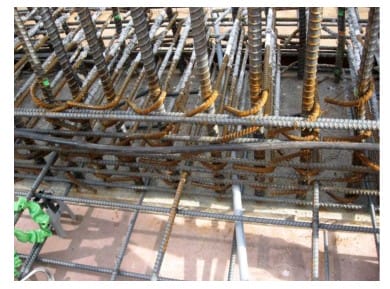No products in the cart.
4.3
- Course No E – 1560
- PDH Units 3.00
Course No E - 1560
PDH Units 3.00
4.3
- Course No E – 1560
- PDH Units 3.00
Course No E - 1560
PDH Units 3.00
Intended Audience: civil engineers and all engineers interested in design of facilities resistant to terrorist threats
PDH UNITS: 3
Get the latest insights into the antiterrorism assumptions for building design in our course exploring the location, size, and nature of unpredictable terrorist threats. Developed by expert J. Paul Guyer, P.E., our online engineering course discusses current antiterrorism assumptions for building design and the specific range of assumed threats to consider in order to provide a reasonable baseline for the design of all inhabited buildings. Designing to resist baseline threats not only provides general protection today. It also establishes a foundation upon which to build additional measures where they're justified by higher threats or where the threat environment is expected to increase in the future. While those baseline threats are less than some of the terrorist attacks that have been directed against personnel in the past, they represent more severe threats than a majority of historical attacks. As such, it may be cost prohibitive to provide protection against the worst-case scenario in every building. The present course provides civil engineers and other professional engineers insight into the nature of terrorist threats. The antiterrorism assumptions for building design that are addressed in these standards cover attacks on personnel. Threats to other assets and critical infrastructure are beyond the scope of these standards.
Course Outline
1. ASSUMPTIONS 2. BASELINE THREAT 3. CONTROLLED PERIMETERS AND ACCESS CONTROL 4. LEVELS OF PROTECTION 5. APPLICABLE EXPLOSIVE WEIGHT 6. STANDOFF DISTANCES 7. UNOBSTRUCTED SPACE 8. BUILDING OCCUPANCY LEVELS 9. LAMINATED GLASS AND POLYCARBONATE 10. EXEMPTED BUILDING TYPES 11. POLICIES AND PROCEDURESLearning Objectives
At the successful conclusion of this course, you’ll be able to identify and discuss:- Location, size, and nature of terrorist threats, which by nature are unpredictable
- Baseline explosive weights
- How a vehicle bomb is assumed to be a stationary vehicle bomb (i.e. vehicles presumed to be parked covertly without being noticed as doing anything unusual)
- How waterborne vessels will be assumed to contain quantities of certain explosives depending on whether or not a controlled perimeter has been established
- How indirect fire weapons are assumed to be military mortars with fragmentation rounds containing explosives
- How direct fire weapons include small arms weapons and shoulder-fired rockets requiring direct lines of sight
Course Reviews
4.3
4.3
3 ratings - 5 stars2
- 4 stars0
- 3 stars1
- 2 stars0
- 1 stars0
Once completed, your order and certificate of completion will be available in your profile when you’re logged in to the site.









Light on content
Good overview for those that knew little about this topic. That’s the reason I took the course.
Excellent Review of explosive load on building.